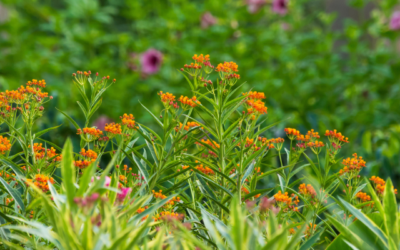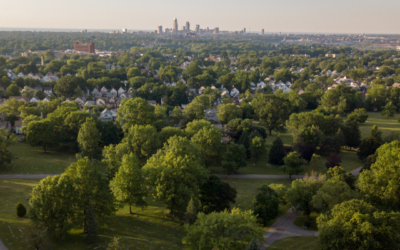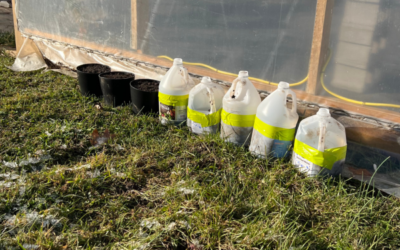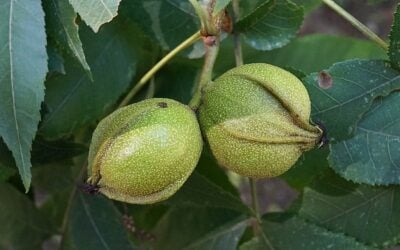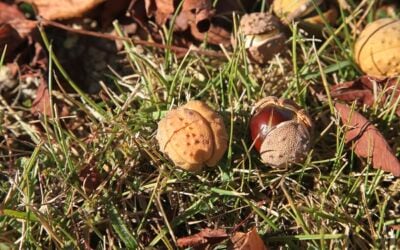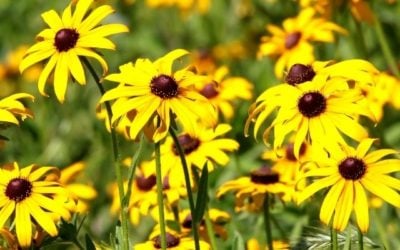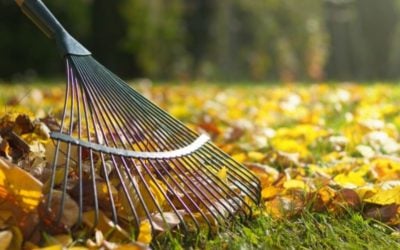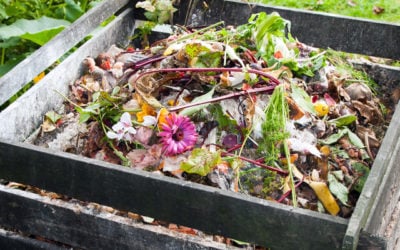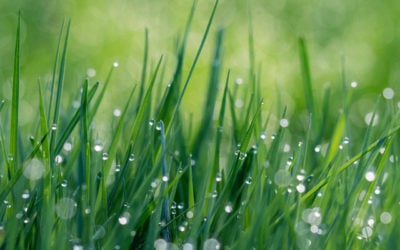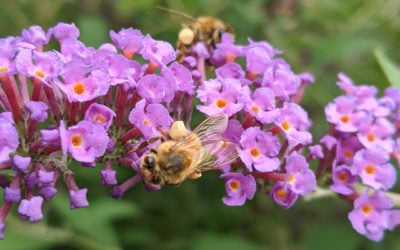Shrink Your Lawn: A Guide to Growing More Native Plants
Discover the Benefits of Shrinking Your Lawn and Growing Natives
In the United States, the quintessential image of a perfect lawn is often a well-maintained, lush green turf. Covering approximately 40 million acres, or about 2% of the country’s surface area, these lawns are traditionally seen as symbols of beauty and elegance. However, this widespread admiration masks a less talked about reality: the environmental impact of these green expanses.
The modern development practices, which often involve scraping off or compacting the topsoil, render the ground beneath our lawns largely impervious. This means that during rainfall, instead of absorbing water, our lawns contribute to run-off pollution. This phenomenon occurs when rainwater or melting snow travels over the land, accumulating pollutants and soil, which are then carried into water bodies like streams, rivers, and eventually larger areas such as Lake Erie. The consequences of run-off pollution are severe, leading to issues like excessive algal blooms, fish kills, reduced tourism, and compromised drinking water quality. The environmental and economic costs are significant.

However, there’s a viable and beneficial alternative: incorporating native plants into landscaping. Moving away from traditional lawns to native plant landscaping offers multiple advantages. Not only does it enhance a home’s curb appeal and potentially increase its resale value, but it also provides crucial habitat and food for local wildlife, including birds and insect pollinators.
There’s a common misconception that native plants look untidy compared to the classic lawn. But this couldn’t be further from the truth. With proper planning and design, native plant landscapes can be just as elegant and visually pleasing as traditional lawns. The transition to native landscaping is not just a cosmetic change but a meaningful step towards environmental stewardship. It’s time for homeowners to rethink the American lawn and embrace a more sustainable, eco-friendly approach to landscaping.
In this guide, we’ll explore the importance of reducing your lawn’s size and explain the many benefits it brings, both for your wallet and the environment.
Benefits of Shrinking Your Lawn
Shrinking your lawn comes with numerous perks that go beyond just making things look good. Going for a more sustainable route not only saves you a load of time and effort on lawn upkeep but also cuts down on the amount of yard waste you need to deal with. According to the EPA, 30 to 60% of urban fresh water is used to water lawns each year. Given that grass needs two to three times more water compared to a mixed, sustainable landscape, you’ll notice a big drop in water use.
You’ll rely less on synthetic fertilizers and herbicides, cutting down on potential health risks. Plus, this eco-friendly move creates a habitat where native flowers and shrubs become the VIP spots for all sorts of critters, from birds to essential pollinators. By mixing things up with different plants, you’re not just making your place look good; you’re giving wildlife a cozy hangout. Swapping out your massive lawn for native plants boosts your home’s curb appeal and amps up its resale value thanks to the appeal of low-maintenance landscaping.
Lawn Reduction Strategies
Transforming your traditional lawn into a more environmentally friendly space doesn’t have to be an overwhelming task. It begins with a critical assessment and strategic planning. Here are ways you can get started:
- Conduct a Lawn Assessment: Take a walk around your lawn and look at it with a critical, discerning eye. Observe and identify areas of your lawn that are seldom used or are purely ornamental. These areas are prime candidates for replacement with more sustainable options.
- Evaluate Foot Traffic Patterns: Pay attention to how people move across your lawn. Are there certain paths that are frequently trodden? These areas might be better served with permanent pathways. Replacing these high-traffic turf areas with materials like stone, pavers, or even mulch can reduce lawn size while adding an aesthetic element to your landscape.
- Start Small and Focus on Problem Areas: The idea of reducing your lawn size can seem daunting, so it’s advisable to start small. Begin with areas that are typically problematic for grass growth, such as steep slopes or heavily shaded zones. These areas often require more maintenance and can struggle to support healthy turf grass.
- Implement Gradual Changes: Lawn reduction doesn’t have to happen overnight. Gradually replacing sections of your lawn allows you to adjust to the new look and understand the care requirements of your new plants. This phased approach is less overwhelming and gives you the opportunity to learn and adapt as you go.
Five Reasons to Opt for Native Plants
Native plants stand as unsung heroes in landscaping, providing a multitude of advantages:
- Thriving on their own, native plants are hardier and establish faster than traditional turf grass.
- Opting for native plants has a huge environmental impact such as reducing the need for watering, fertilizers, and pesticides which lightens the environmental load.
- Native plants offer long-term savings and demand less upkeep compared to high-maintenance turf grass.
- Transforming your yard with native plants attracts vital pollinators like birds, bees, and butterflies.
- Native plants bring a burst of colors, textures, and bloom times, creating a visually stunning landscape throughout the seasons.

Step-by-Step Guide to Shrinking Your Lawn
Step 1: Outline your new planting bed with a garden hose or rope. Consider installing edging around the new bed for a more defined garden bed.
Step 2: Smother the grass with newspaper and mulch. You could also install topsoil directly over your existing grass. This process should take around two to three weeks in the hot summer months.


Step 3: While you are waiting for the grass to die, finalize your garden design with native plants and shrubs.
- Diversify the garden bed with a mix of native shrubs and flowers.
- Include both evergreen and deciduous shrubs for year-round interest.
- Consider water and sunlight requirements and focus on plants that serve as excellent wildlife habitats, providing cover and food.
Step 5: Plant native shrubs and perennials through the mulch.


Step 6: Water plants well during and after planting until they are established. One major benefit of opting for native plants is once they are established, they require less maintenance and watering.


The Cuyahoga Soil and Water Conservation District recommends these native plants:
Flowering Plants
- Black-eyed Susan
- Great Lobelia
- Butterfly Milkweed
- Ohio Spiderwort
- Culver’s Root
- Ohio Goldenrod
- Purple Coneflower
- Marsh Milkweed
- Cardinal Flower
- Jacob’s Ladder
- Joe Pye Weed
- New England Aster
- Bee Balm
- Obedient Plant
- Cup Plant
- Blue Vervain
Grasses & Ferns
- Big Bluestem
- Wet-tolerant Sedges
- Virginia Wild Rye
- Fowl Manna Grass
- Torrey’s Rush
- Switch Grass
- Ostrich Fern
- Sensitive Fern
- Cinnamon Fern
- Red Maple
- Chokecherry
- River Birch
- Summer Sweet
- Silky Dogwood
- Winterberry
- Pin Oak
- Elderberry
- Highbush Blueberry
- Arrowwood Viburnum
Visit www.cuyahogaswcd.org for their full list of recommended native plants
A Greener, More Sustainable Tomorrow
By following these strategic steps, you can effectively reduce your lawn size in a manageable and environmentally beneficial way. Each step not only contributes to a more sustainable landscape but also adds unique beauty and character to your yard. Take a look at what progress looks like year one compared to year three. You can see how quickly native plants mature and provide a beautiful backdrop you can enjoy.

As you step into the journey of shrinking your lawn, remember that every small change contributes to a more sustainable tomorrow. Embrace the beauty and benefits of native plants, reduce water consumption, and create a vibrant haven for wildlife. It’s not just about a smaller lawn; it’s about a brighter, healthier future for your home and the environment.
Happy landscaping!
More Articles for a Healthy Yard and Home
How To Fight Stream Pollution Through Effective Stormwater Management
In this guide, we’ll explore and address how pollutant loading in streams is crucial for the well-being of both watersheds and communities.
Roots of Sustainability: Understanding the Importance of Trees in Urban Living
A healthy urban tree canopy has a profound and positive impact on community quality of life in various ways. Recognizing the value of urban trees and investing in their preservation can contribute to sustainable, resilient, and vibrant urban living.
Cold-Weather Cultivation: 8 Steps to Winter Sowing and Seed Stratification
It is important to determine when native seedlings are ready for harvest. Not sure how to? Check out our guide to harvesting native seedlings.
How to Know When Native Seedlings are Ready to be Harvested
It is important to determine when native seedlings are ready for harvest. Not sure how to? Check out our guide to harvesting native seedlings.
Harvesting Guide for Native Seedlings and Plants
Stearns Native Nursery is always in need of native trees and seedlings. To get your native plants to the Stearns Nursery, follow this harvesting guide.
How to Add Native Plants to Your Garden
Many of us have chosen to cultivate species and landscapes that are not naturally-occurring in our region. It’s wasteful, expensive and detrimental to wildlife who encounter reduced availability of the native species upon which they feed.
Wildlife-Friendly Fall Yard Cleanup
Before any landscape program begins, assess the current conditions of your home landscape. This assessment will help you to identify and prioritize future projects and allow you to appreciate all the positive changes you’ve made.
Composting 101
Before any landscape program begins, assess the current conditions of your home landscape. This assessment will help you to identify and prioritize future projects and allow you to appreciate all the positive changes you’ve made.
Turf Grass Care
Before any landscape program begins, assess the current conditions of your home landscape. This assessment will help you to identify and prioritize future projects and allow you to appreciate all the positive changes you’ve made.
What is a Pollinator Garden?
Before any landscape program begins, assess the current conditions of your home landscape. This assessment will help you to identify and prioritize future projects and allow you to appreciate all the positive changes you’ve made.

